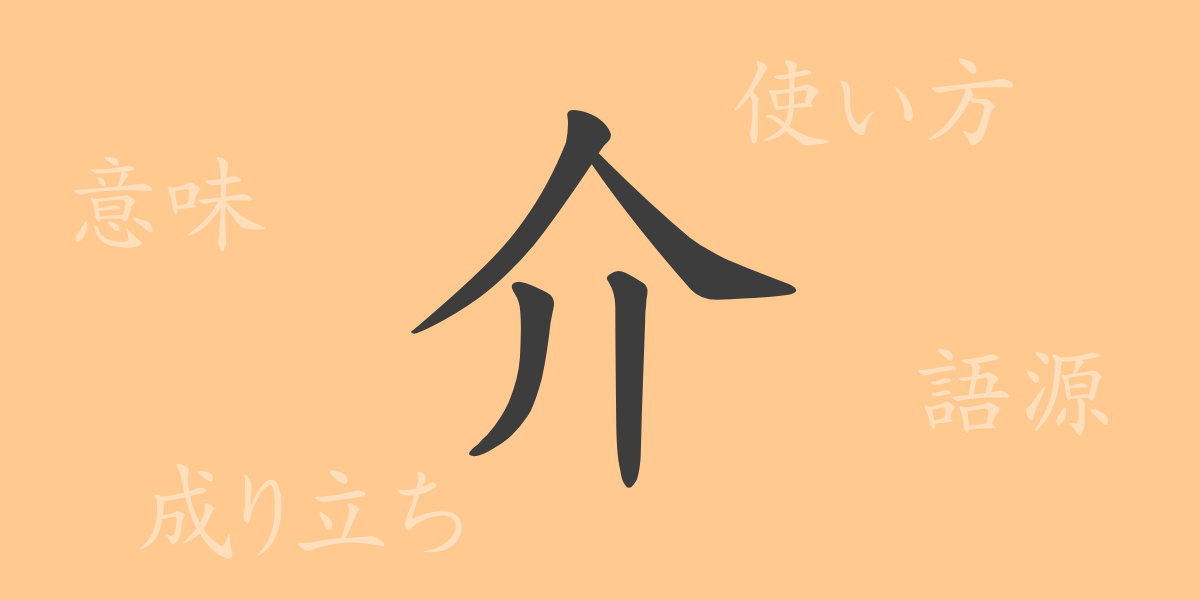The beauty of the Japanese language is also reflected in its characters. The commonly used Kanji in Japan, with their shapes and sounds, carry deep meanings and history, and are closely related to the daily lives of the Japanese people. The Kanji “介” (Kai) is often seen in our lives, but surprisingly few people fully understand the etymology, meaning, and usage behind it. In this article, we will delve into the charm of “介” (Kai), exploring its usage, compound words, and idiomatic expressions. Let’s embark on a journey to deepen your understanding of the Japanese language.
The Origin (Etymology) of 介
The Kanji “介” (Kai) is, as its shape suggests, modeled after the figure of a person spreading their arms out to the sides. In ancient China, its prototype can be seen in oracle bone script, where it represented the act of something being sandwiched by a person. From this meaning, it came to signify actions such as intervention and mediation, as in “getting in between”. It also encompasses the meaning of “helping” as in assistance, making it a Kanji that symbolizes the relationship between people.
The Meaning and Usage of 介
The Kanji “介” (Kai) carries meanings such as “to intervene”, “to mediate”, and “to help”. Specifically, it refers to situations where a person steps in between others to assist or to mediate for problem-solving. It also includes nuances of supporting or aiding, as in caregiving. In terms of usage, it is rarely used on its own and is most commonly utilized as part of compound words.
How to Read 介, Stroke Count, and Radical
The Kanji “介” (Kai) is one of the easier characters to remember due to its simple yet powerful structure.
- Reading: The Onyomi (Chinese reading) is “カイ” (Kai), and there is no particular Kunyomi (Japanese reading).
- Stroke Count: It consists of 4 strokes.
- Radical: The radical is “人” (Hito – person or にんべん/Ninben – person radical).
Compound Words, Idiomatic Expressions, and Proverbs Using 介 and Their Meanings
Compound words and idiomatic expressions that include “介” (Kai) often relate to interpersonal relationships, as the meaning suggests. Let’s look at some examples below.
- 介入 (Kainyuu): The act of a third party getting involved in a matter or problem.
- 介護 (Kaigo): The act of caring for the sick or elderly.
- 仲介 (Chuukai): The act of mediating between two parties.
- 介添え (Kaizo-e): The act of attending to the bride and groom at a wedding.
- 介抱 (Kaihou): The act of caring for the sick or injured.
These compound words and idiomatic expressions are frequently used in the communication and social lives of the Japanese people.
Conclusion About 介
The Kanji “介” (Kai), as suggested by its shape, is deeply involved with interpersonal relationships. It can be said that the spirit of mutual support and assistance among people is reflected in Japanese culture and language. “介” (Kai), simple yet with profound meaning, will continue to be cherished in our language as a character that conveys the richness of the Japanese language.

























